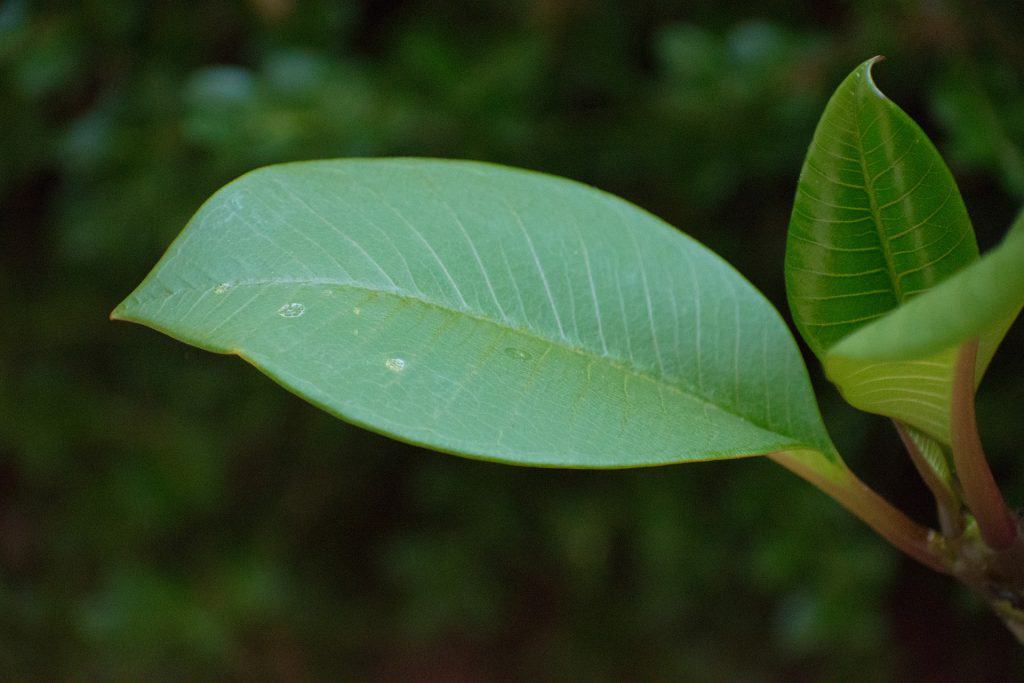For every plant, there is a growth cycle which changes depending on the temperature and the weather. Plumerias are no different.
Depending on the season, there is a time to sow the seeds (or cuttings), a time for their growth spurt, for the flowers to bloom and for them to go into hibernation following which the cycle begins again.
If you want to know how it plays out, here’s a guide on the Plumeria’s growth stages.
Origin Story: A Brief Introduction
This is a subtropical plant which is popular for its fragrant flowers. They come in beautiful clusters and in many colors. You can grow this plant from the seeds or cuttings from an existing plant, but as is the case with any other plant, you have to time it right. In fact, propagating the plant from cuttings is a lot easier and preferred when compared to growing it through seeds.
These plants are native to tropical regions like Mexico, South and Central America, which is why they grow well in warmer climates. They like a good deal of direct sunlight during the day. That’s about 4-6 hours.
But when they are young, they still need a bit of shade. They can be grown both indoors and outdoors and in the ground and in a container.
They must be planted in well-draining soil that is a little acidic. These plants need to be watered deeply, but their feet must never sit in stagnant water. If you want to propagate the plant, here’s what you need to know about its growth stages.
These plants take a little longer than other deciduous plants to start branching out and flowering. If you live in a cooler region, the plant might not have any leaves and flowers at all for half the year. So, while we can look at seasons to keep tabs on its growth, it’s more about the temperature.
Active Months: Spring and Summer
Spring and summer are the best times to start thinking about propagating the Plumeria plant. Spring is when the plant is actively growing and summer is when it is easy to root the plant.
A week before you are ready to plant it, collect the cuttings from an existing plant that is also healthy. Make sure the donor plant is properly hydrated the night before. Harden the cuttings from the plants by making a deep cut on the node. The cutting must be about 12-18 inches in length.
Give the cuttings a week so that the calluses are taken care of and the tips are hardened. This will help the plant grow roots effectively while also protecting it from infections. Make sure the cuttings are stored in a cool place with shade.
When you are ready to propagate the plant, gather your cuttings and get a potting mix. The ratio should be two-thirds perlite and one-third potting soil. Fill a large container with drainage holes with the soil mix.
Push the cuttings about 2 inches into the container with the soil and water them right away. Make sure the excess water comes out of the pot so that root rotting because of overwatering does not become a concern. Keep the pots in a place where they get full sun and a little shade during the day.

After this, you pretty much have nothing to do till the roots form. That will take about 60-90 days.
But since spring is still their growth season, you must feed them well. That means giving the plant ample amounts of water and fertilizer. These plants need fertilizer like 10-30-10 that is rich in phosphorus and helps the plant flower.
If you want the plants to have a lot of leaves and not flowers (which is a shame, by the way) you must give them fertilizer that is rich in nitrogen. This needs to be done once every 2-3 weeks till the growing season comes to an end. But more on that in a minute.
One of the ways to encourage growth is to prune the plant. You can prune Plumeria plants to almost 12 inches from the ground. This needs to be done in late winter or early spring before the next growth spurt. But be gentle because hard pruning can result in reduced flowering.
Flowering Season: Early Summer
Flowering is a tricky thing with Plumeria plants. It takes them about 2-3 years to mature which is when you can expect to see flowers. Meanwhile, you should make sure that they are growing well.
The flowers start developing in early summer. You will notice the clusters at the edges of the plant’s branches. This will go on till early in the fall when the temperatures start to drop. But some have managed to keep the plant blooming by keeping its immediate environment consistently warm.
Plumeria flowers can be in different colors, from white, yellow, pink and red. They could be in one color or a combination of these possibilities, depending on the seed or cutting donor.
Then comes time for the long winter nap.
Dormancy: Late Fall and Winter
By the time it is mid-fall, you will notice drops in mercury and it is time to stop the fertilizer. It is also time to reduce watering.
In winter, the plant will become completely dormant and should not be given any water at all. If you think it’s dying, you can give it one small cup of water once a month. If the plant is outdoors, mid-fall is a good time to bring it indoors into some warmth.
The Bottom Line
This is a beautiful plant that has aromatic flowers that are popularly used in spas and to make leis in Hawaii. If you want to reap those benefits well then you better pay attention to the Plumeria’s growth stages.
